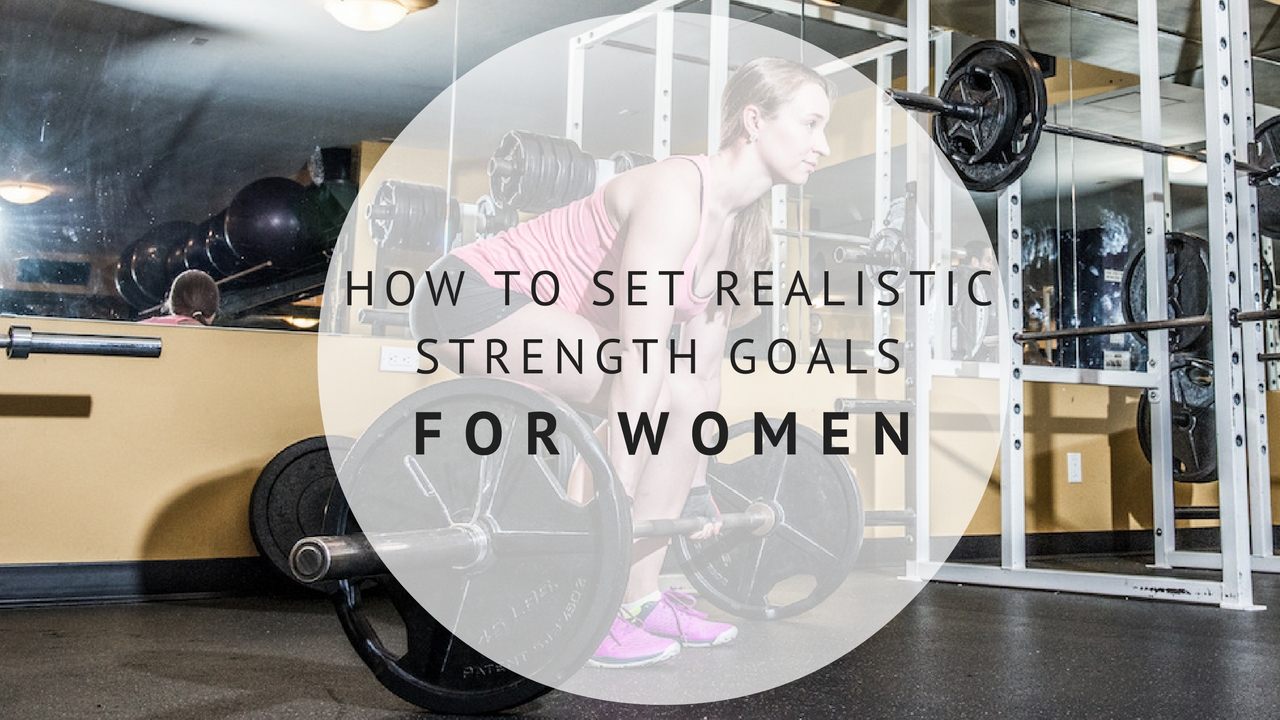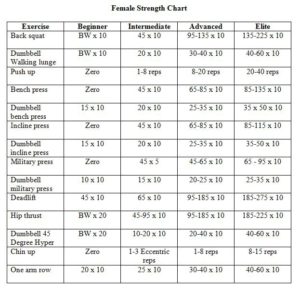
Being stronger is certainly the new ‘it’ goal for the year. I have had many of my clients shift their goals away from body image focussed goals and fitting into their favorite pair of jeans for becoming stronger. As a coach who advocates positive body image and focuses on strength & confidence outcomes as a measure of success, I am tickled pink with how womens' perception of strength training is shifting.
Several years ago, I found myself on the bikini competitor stage and working out entirely for aesthetics. I dropped over 14 pounds off of my small frame and got up on that stage after 17 weeks of dedicated lifting, eating “clean” and measuring my body fat and weight week after week. In a bright purple bikini, I got up on stage and was told that my lower half was “not conditioned enough” (aka competition speak for your body fat is too high) and my hair (yes...my hair) was not “pageanty enough”.
After focussing on changing my outside for 17 weeks only to be told that I was too flabby, I didn’t feel the expected glory and glow I thought I’d feel. I didn’t feel as great as I'd hoped sliding my skinny jeans over my hips and finally being able to wear a belly top. I needed something that made me feel amazing. So I turned to power lifting.
I was lucky enough to be introduced to power lifting by a friend at the time and he introduced me to the ultimate power you could experience from becoming strong. Slowly, I began to learn how to deadlift, how to bench press and how to squat heavy. What I began to experience was an intrinsically motivated feeling that felt like one of the most satisfying “I did it!” moments every time I entered the gym. I wanted to share this excitement with my clients, so I decided to teach them how to be strong too. Once they began to experience this feeling and love it as much as I did, I knew we were on the right track.
Currently, I have 10 female clients that can squat over 100lbs and 9 that can deadlift over 120lbs….all for 8 or more reps! These women truly are fantastic examples of what is possible with a small shift in goals and in mindset. The best part is, each one of them could tell you that strong does NOT equal bulky.
If you are feeling inspired (like I was years ago!) and are ready to get strong, it may seem overwhelming to get started. There are so many exercises to choose from and it may be confusing to know what is achievable. If you are coming from a non strength training background, it may be challenging to set goals that are appropriate. How do you know where you should begin? What is a good weight to aim for in a squat? How many pushups should you set as a goal?
I came across this amazing chart on a blog by Bret Contreras. If you haven’t heard of him, he is an American trainer known in the personal training industry as The Glute Guy. He is an extremely well educated trainer with his PhD in sports science. I have followed his work closely throughout my career as a coach and apply many of his principles on a regular basis with my clients.

In 2010, he put together this awesome chart which allows you to assess if you are a beginner, intermediate, advanced or elite athlete on all of the primary movements you will do in the gym. For example, if you look at the pushup column (third one down), you will see that if you are not able to do any pushups from your feet, you are currently a beginner. If you can do between 1-8 pushups, you are intermediate, between 8-20 you are advanced and between 20-40 you are elite. (Click the image to enlarge it!)
Using this chart, you are able to clearly identify where you currently are and how far away you are from the next level. This chart allows you to set achievable goals that the average woman is able to reach. If you are currently rocking out 3 push ups, you could set a goal to move from intermediate to advanced in the next 2-3 months. This is a specific, measureable, and absolutely realistic goal.
Here is your strength training goal setting challenge:
For beginners, I want you to choose 5-7 exercises from this chart that you are comfortable completing in the gym. For intermediate or advanced strength training women, I want you to test all of these exercises if possible. For each exercise in which you fall under the Beginner column, score yourself ONE point. Intermediate columns score a 2, Advanced columns score a 3 and Elite columns score a 4.
If you score yourself on all 14 exercises, the maximum possible score will be 56 (14 exercises x 4 points each). If you only choose 6, there will be a max of 24 points and so on.
Using the chart, find out how many total points you score on the exercises you completed. Depending on the number of exercises you chose, you can now set a point goal to increase by! The more exercises you complete, the more points you could potentially earn over the next three months.
Pretty neat way to assess strength goals! The best part is, you have an idea of what to aim for and what is realistic based on this chart. One thing to keep in mind is that several assumptions were made in the creation of this chart and these are quoted directly off of Bret’s blog:
- No anabolic steroids (this changes everything)
- Typical anthropometry (height, weight, body segment length ratios)
- Of normal age range (16-50 years old)
- Proper form (full range of motion – no partial reps)
Definitely read through Bret's full blog and keep these variables in mind when reading the chart. Our limb lengths, body weight and several other factors affect our ability to excel at certain lifts with respect to others.
I hope this inspired you to set some new goals in the gym because it inspired me! I’d love to hear what YOUR score was and what your new goal is based on this chart. Send me an email or comment below!
I find this so inspiring and definitely a great place to start but being bit bigger than average back squatting my body weight plus 10lbs as a beginner I think would be entirely impossible infact my last attempt at back squats was 15% of my body weight and I knew about it afterwards!!
Hey! Thanks for your comment 🙂 If this helps, when it says bodyweight, that means just your body with no weights (as opposed to adding any weight to your squat). Great to see you’re working on your strength!